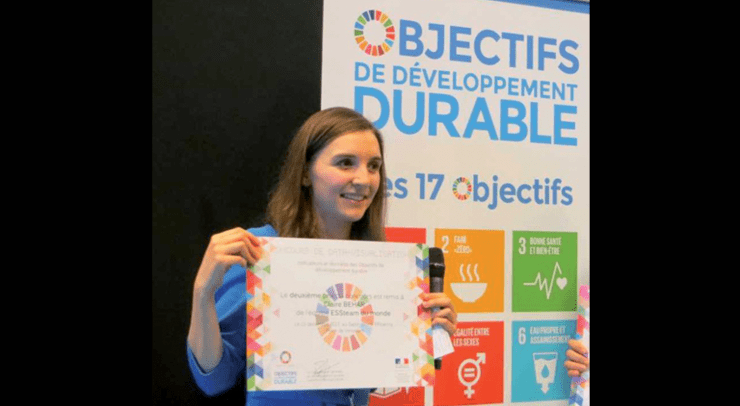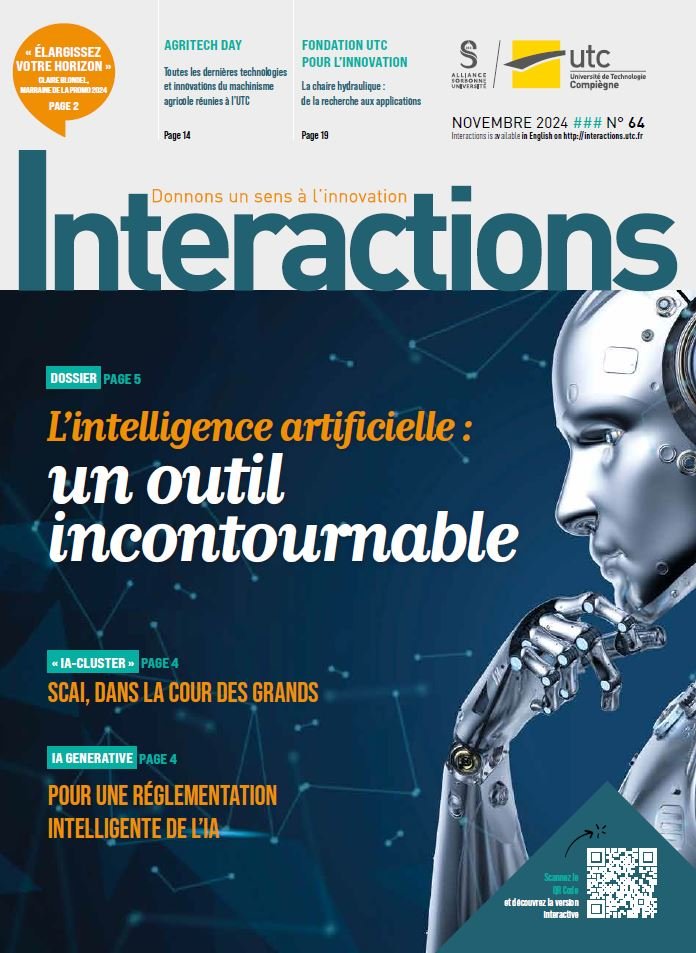SD* data at a glance

Claire Bechar, a UTC graduate who majored in Urban Systems Engineering (GSU), won second place in the Dataviz SDG* competition organised by the French ministry in charge of Ecological Transition and Solidarity. It is an event that rewards the best digital projects that set out the 17 United Nations goals for sustainable development, to which end France is an active party.
Claire Behar, currently in charge of the development for a Data Analytics department of WorkIT Software, is a specialist in big data applications in e‑commerce, but has also been interested in the thematics of sustainable development ever since she studied at UTC-Compiegne. In 2012, she also won a second place — with two other UTC undergraduates — at the ADEME competition: “The SD Generation”. This is an annual event that addresses undergraduates in higher education, who come up with concrete applicable solutions to day-to-day problems aimed at reduced consumption of resources and decreased greenhouse gas (GHG) emission levels.
What these students propose to the ADEME Jury was an, “app” to facilitate choice of personal routing when several transport modes co-exist. The “app” automatically calculates the route and mode that emits least CO2 and proposes group booking. The overall aim was to set up a general public web-site to facilitate public transport and co-sharing rides. Our then undergraduate was inoculated with a combined ecology/new technology virus, enabling her to face new challenges.
The ‘state’ of the planet Earth
In 2017, and thanks to the eSteem social network that favours and enhances humanitarian charity based activities and aims, Claire discovered the “Dataviz SDG competition” (in French Dataviz ODD). She also met her two future team-mates on this associative and professional alternative network, both employed by the French Electricity Operator, now called Engie, who were as impassioned as Claire was about sustainable development objected. When Claire took up this challenge, she had already hear about the UN Horizon 2030 global action plan and its 17 Sustainable Development Goals (SDG).
However, at the time she ignored quite a lot of the pointers used to set up this “volontaristic” program. The 17 goals set out in the UN document rely on statistics and diagnostics from all round the world. Now it is no easy matter to draw international comparisons when there are many themes involved. Depending on the countries assessed, the criteria used cane defined in largely different ways hence the difficulty of offering a coherent overview. Dataviz SDG has the objective to make the information for this complex set-up accessible and to better situate France’s contributions and actions. The aim was to make 244 data inputs attractive and easily understood, using animated images and graphics, for domains as distinct as agriculture, poverty levels and terrestrial biodiversity.
“The indicators for social status are relatively familiar, but in contradistinction, when we look at “artificialisation” of soils or biodiversity we must know how to be pedagogical”, analyses Claire Behar. Despite the scale of the task, and with just two months to finalize a proposal “At UTC, we learned how to implement projects in very short time spans and that was very helpful here”.
Her professional experience in the development of “apps” and also that as a user helped her also to acquire a good overview and to prioritize problems. Putting the work together was a remote set up using collaborative tools. “All three of us were professionally very busy, living in different towns in the Ile-de-France Region but this also turned out to be a highly ecological way to work together”, adds Claire to sum up. The end-result was a very attractive interactive website where the objectives of SD can be addressed from 4 different angles: generalities, comparison of French territorial departments, parallel comparisons country-by-country and finally an assessment of any personal project in terms of the UN’s 17 SDGs.




